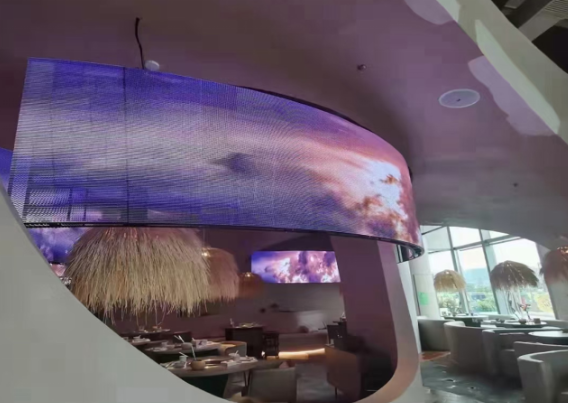News
Site Editor
 Site
https://hscled.cn08.wondercdn.com/uploads/image/68931a3c33409.png
The advantages and disadvantages of transparent LED screens compared to conventional LED displays are mainly reflected in the following aspects:
Site
https://hscled.cn08.wondercdn.com/uploads/image/68931a3c33409.png
The advantages and disadvantages of transparent LED screens compared to conventional LED displays are mainly reflected in the following aspects:
Transparent LED Screen vs Conventional LED Display: Advantages and Disadvantages
Views: 4217
Author: Site Editor
Publish Time: 2023-06-14
Origin: Site
As LED display screen production technology matures, the variety of LED products is increasing. The transparent LED screen, as a new creative screen, is becoming more and more popular due to its advantages such as light weight, no need for steel frame structure, easy installation and maintenance, excellent transparency performance, etc. It is widely used in glass curtain walls, stage art performances, outdoor advertising, new retail and other fields. But how does it compare with conventional LED screens in terms of advantages and disadvantages?
In fact, the transparent LED screen was born on the basis of conventional LED displays to meet specific market demands. Conventional LED screens are not transparent, with a thick structure and a bulky appearance. Transparent LED screens use strip designs that incorporate translucent elements, optimizing the overall structural shape, reducing thickness, weight, improving heat dissipation, and giving a more aesthetically pleasing high-end appearance.
The advantages and disadvantages of transparent LED screens compared to conventional LED displays are mainly reflected in the following aspects:

Display Effect
Conventional LED displays have the common picture display effect of LED displays, which can meet most display needs, but may fall short in personalized displays. Transparent LED screens not only have bright and gorgeous display effects, but also bring a floating sense and magical display effect through their own transparency, which is extremely eye-catching and more conducive to the dissemination of display content.
Structural Features
Conventional LED displays have a heavy box structure, including box frames, modules, cooling equipment, and other devices, with a common appearance and difficult to repair. The transparent LED screen adopts an aluminum profile structure with a transparent PC panel, without a centralized layout of box accessories, and has good lighting and transparency, requiring no additional cooling equipment. Its structure is simple and its appearance is fashionable and beautiful, with a weight reduction of more than 50% compared to traditional displays of the same area size.
Installation and Maintenance
Conventional LED displays have a complex and heavy structure, require steel structures for installation, and have safety risks when installed outdoors. If fixed installations are chosen, the wall may be damaged, and special operations are required for maintenance. Transparent LED screens can be installed indoors and outdoors, with an all-round activity lock for its skeleton system, making installation convenient and easy to operate. The accessory module is movable without removing it, only requiring the replacement of the problematic unit component. Maintenance is simple and saves manpower.

Other Differences
Conventional LED displays use a soft rubber embedded layout, and the minimum distance can be as small as P0.8, achieving ultra-high-definition display effects. It has strong resistance and the highest protection level can reach IP67. However, since transparent LED screens need to achieve transparency and maintain their own transparency, the distance between its light sources can only be about P3, achieving clear but not ultra-clear display effects. Due to the exposed nature of its lamp beads and light bars and the light texture, the highest protection grade is IP46.
Purchase your premium transparent LED displays from us
Transparent LED screens and conventional LED displays have their own unique advantages and disadvantages. Transparent LED screens are a more innovative and creative screen with excellent transparency performance, easy installation and maintenance, and a fashionable appearance. On the other hand, conventional LED displays have a stronger resistance, can achieve ultra-high-definition display effects, and come with a higher protection level. The choice between these two types of displays ultimately depends on the specific needs of the user.
If you're looking for a display solution and are still unsure which type of LED screen to choose, consider your specific needs and preferences. Weigh the advantages and disadvantages of each display type carefully before making a decision. And remember, no matter what kind of LED screen you choose, it's important to work with a reputable and experienced supplier to ensure the highest quality and reliability. Contact us today to learn more about our LED display solutions and find the perfect fit for your project!










